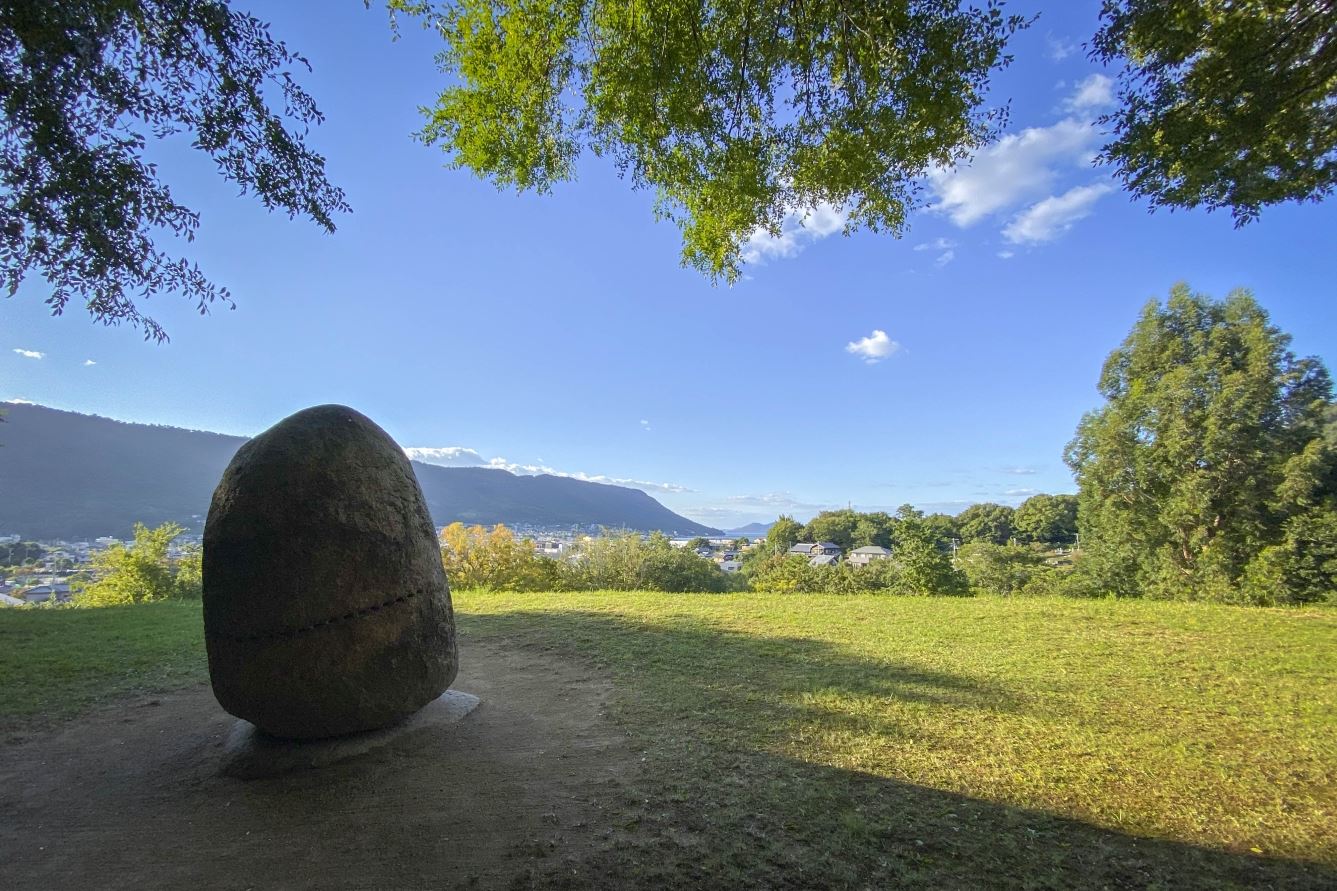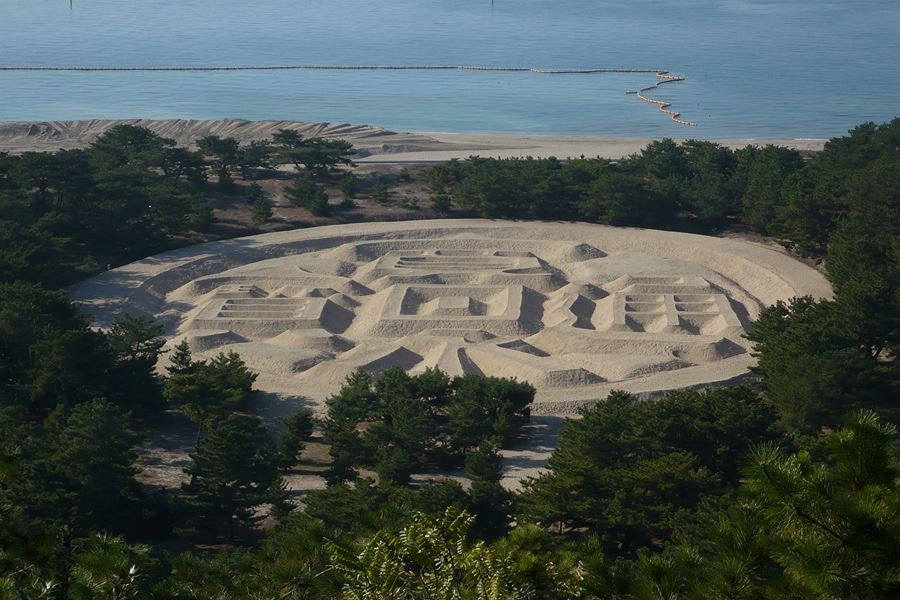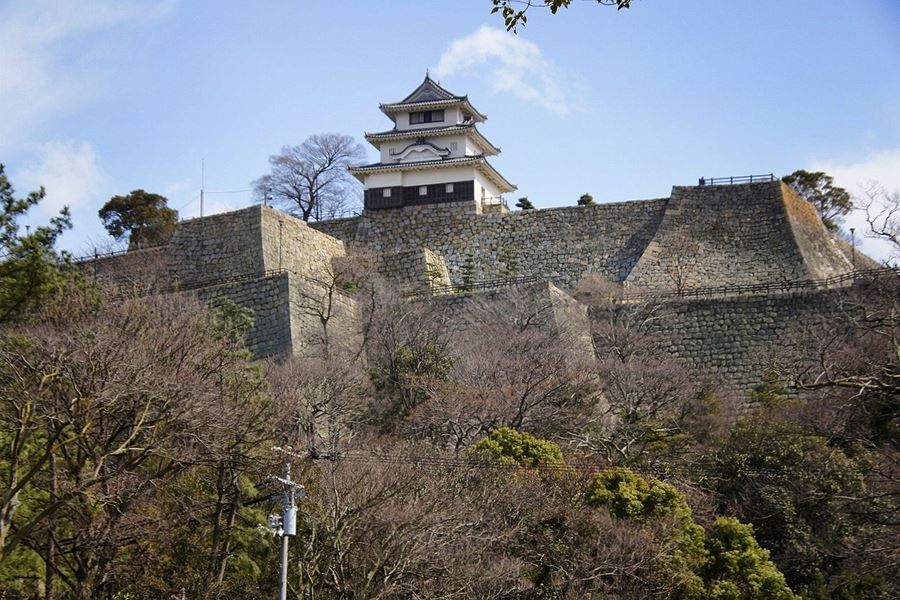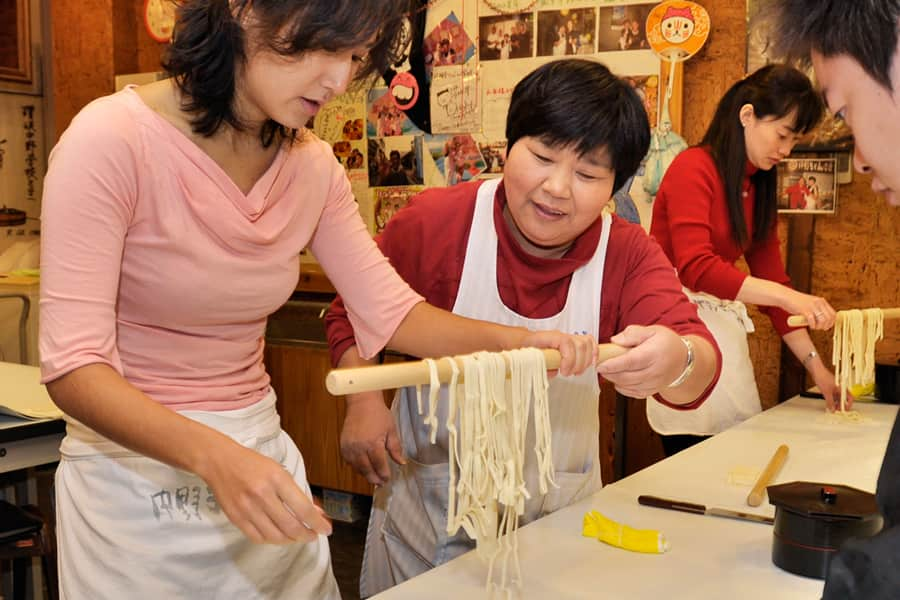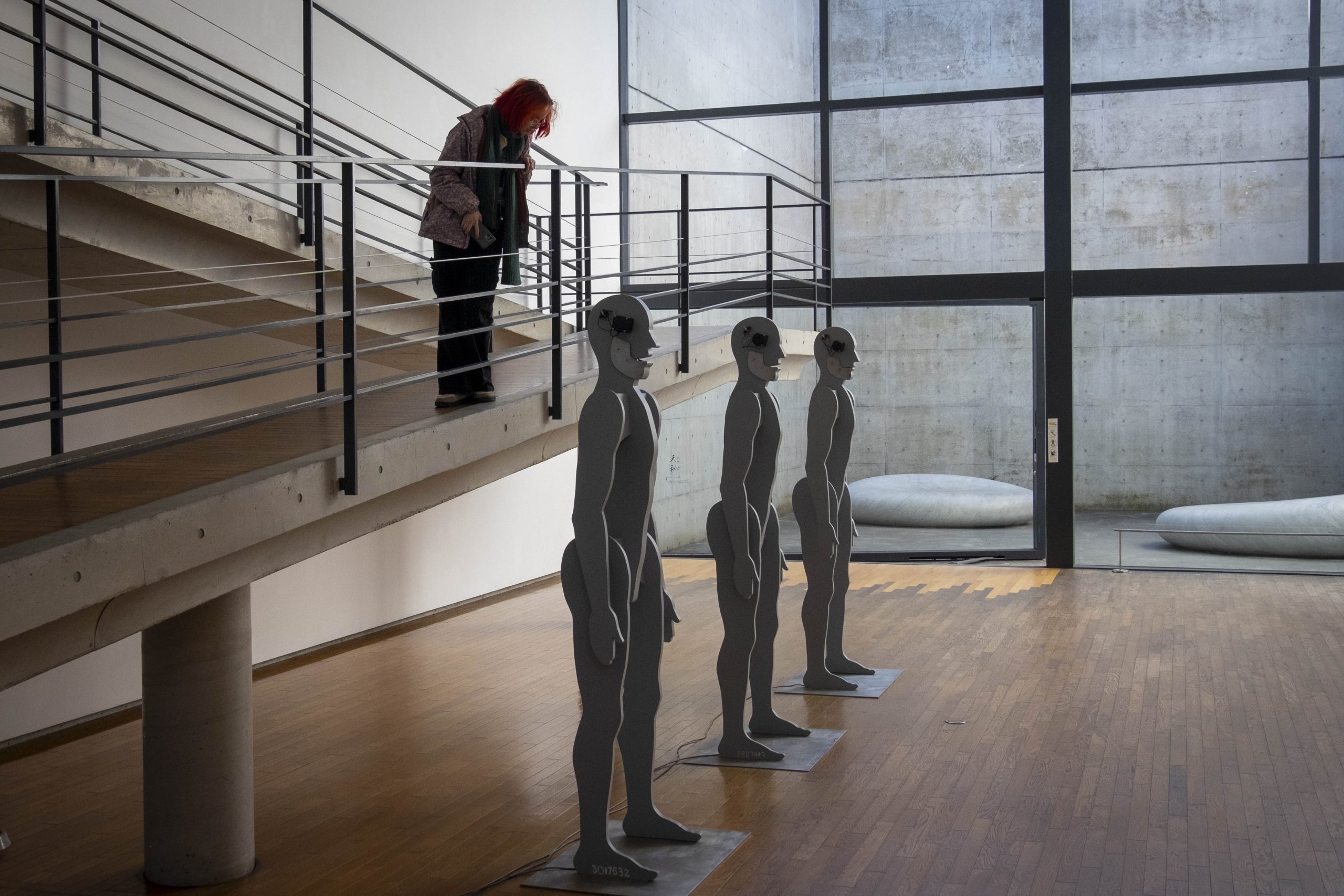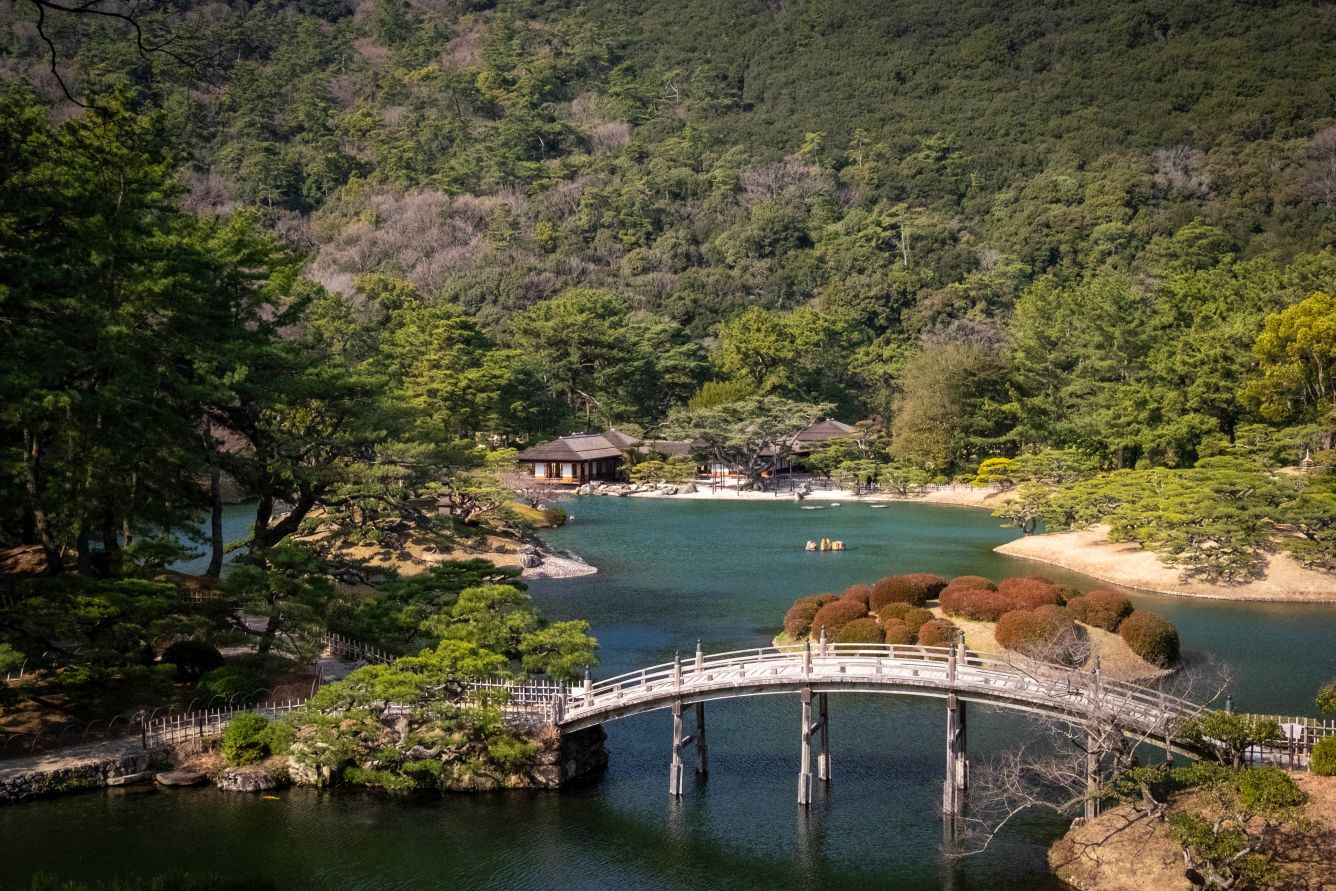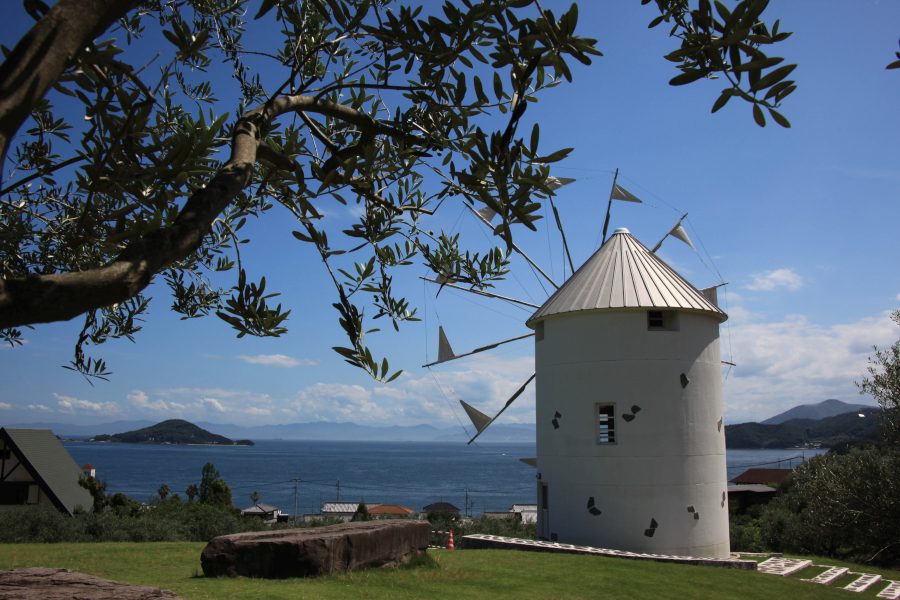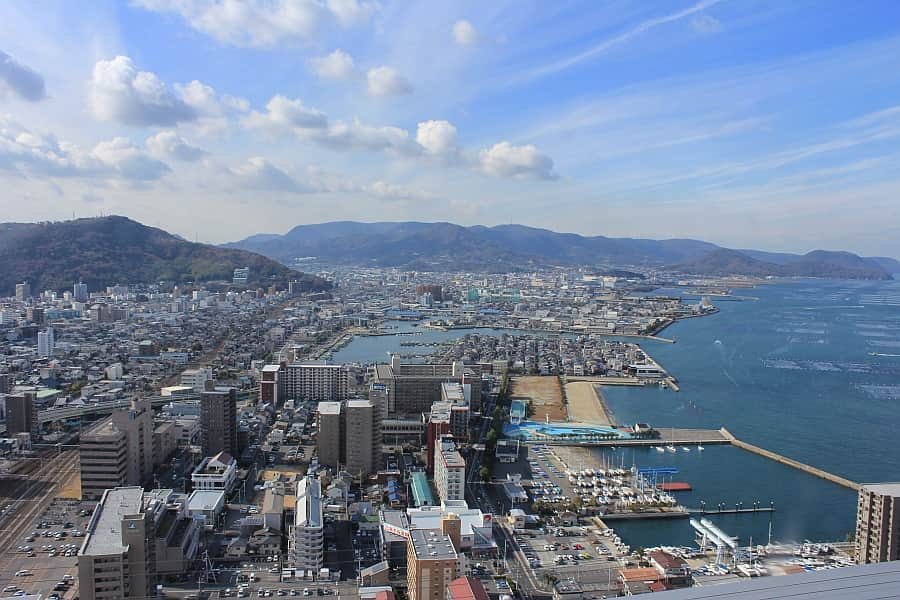Naoshima
Home » Naoshima
Naoshima
Naoshima is the main island of a township made up of twenty-seven islands administered by Kagawa Prefecture. The island has a documented history going back to the Heian period, but today it’s known for its contemporary art museums, which draw visitors from all over the world, especially during the Setouchi Triennale art event held every three years in the region.
Since the island is part of the Seto Inland Sea National Park, there are strict rules for the visual impact of new buildings, so many of the art museums are built into the ground, creating an interesting aesthetic of their own.
Benesse House
Benesse House is a complex comprising a modern art museum and resort hotel on the south coast of Naoshima. It was designed by Ando Tadao, one of Japan’s leading architects. Guests who stay overnight are free to explore the exhibits at all hours. Various artworks including Kusama Yayoi’s pumpkins are dotted around the grounds.
Chichu Art Museum
This museum of modern art is built into a hillside on the southern coast of Naoshima. It was also designed by Ando Tadao. Its collection includes works by Claude Monet, James Turrell, and Walter De Maria, although visitors may find the building itself more impressive than the art.
Art House Project
Abandoned houses, workshops, a temple, and a shrine in the port of Honmura have been reworked into art installations by contemporary artists and architects from Japan and overseas, while largely preserving the original appearance of the town.
Lee Ufan Museum
This museum showcases the installations of the Korean artist Lee Ufan featuring stone, concrete, and metal, as well as some paintings. It’s another Ando Tadao building.
I Love Yu
This is both a working public bath and an art installation, designed by Japanese artist Otake Shinro featuring bric-à-brac gathered all over Japan. The eclectic works include tile murals and a large elephant statue.
Ando Museum
Ando took a normal traditional house and rebuilt its inside, combining his signature sheer concrete with the original interior. There are exhibits presenting Ando’s work on Naoshima and other places in Japan.
The history of Naoshima
The first written mention of Naoshima is in a collection of songs from the end of the Heian period. Thereafter, a number of Emperors are recorded as having visited the island. Among these was retired Emperor Sutoku who was exiled to Sanuki. At first, he was refused permission to land in Shikoku, so he spent three years on Naoshima. Many place names on the island are associated with Sutoku. Legend has it that the name of the island itself, which relates to innocence and honesty, was bestowed by the Emperor in praise of the islanders.
The geography of the islands has always been unsuited to agriculture, and traces of salt-making industry can still be seen on Kiheijima. As a key point for transportation in the Setouchi region, islanders earned a living by fishing, trading, and piracy, although the pirates gradually turned to pilotage.
Towards the end of the Warring States period, Takahara Tsugutoshi, the Christian daimyo of a small maritime clan, built Naoshima Castle on Mt. Hachiman on Naoshima, and established a small castle town with residences, temples and shrines. Several other castles were built around the island. Tsugutoshi served Toyotomi Hideyoshi at the end of the Warring States period. For his services in piloting the boats used by Hideyoshi in the siege of Takamatsu Castle, he was given the three islands Ogijima, Megijima, and Naoshima in 1582. Later he transported troops by ship during Hideyoshi’s invasions of Shikoku, Kyushu, and Korea. At the Battle of Sekigahara, he took the side of the Eastern forces. He died in 1619 in the early Tokugawa period. In the sixth generation, the family was dispossessed of their domain as punishment for an infraction of shogunal laws, and the islands were taken over by the shogunate. Naoshima Castle burned down during a major fire in 1781.
In the Edo period, some islanders took part in the Kitamae shipping business between the territories of the Setouchi region and the Japan Sea coast.
The population of Naoshima increased from the mid-Meiji period, but with economic stagnation, many young people left for the cities. So in 1916 the islanders accepted a proposal from Mitsubishi to build a copper smelter there. Sulphurous acid gas in the smoke generated during the smelting of copper causes a variety of damage, killing trees and polluting streams. Consequently, companies involved in Shikoku’s copper mining sought to move their smelters to remote islands. Mitsubishi was refused by Teshima, which still had robust agricultural and stone industries, but with only minor agricultural and fishery industries, Naoshima had nothing to lose.
From 1917 when Mitsubishi’s main smelter started operation at the northern end of the island, Naoshima rapidly developed as a company town of Mitsubishi Metal Mining and its workforce boosted the population. The municipality became one of the wealthiest local governments in Kagawa Prefecture from tax revenue. However, poisonous smoke killed all the trees in the northern half of the island and the surrounding islands.
The subsequent decline of copper production led Mitsubishi to turn to waste recycling. In the 1990s, illegal dumping of industrial waste blighted neighbouring Teshima. Today, the smelter is used to extract valuable metals from waste cleanly.
In the late 1980s, Naoshima and its surrounding islands began its transformation into a tourist area under a forward-looking mayor. Initially sceptical, local people were gradually persuaded to take part in various creative projects, which helped to preserve the traditional landscape while generating income. The Chichu Art Museum opened in 2005 and the Lee Ufan Art Museum opened in 2010. Cafés and guesthouses are now also springing up.
Information
Name in Japanese: 直島
Pronunciation: naoshima
Address: Naoshima, Kagawa District, Kagawa 761-3110
Related Tours

Experience the most beautiful and interesting temples of the Shikoku Pilgrimage in seven days.

A tour for families or friends, staying in the most characterful kominka and ryokan of Shikoku.

Visit the most beautiful and interesting temples of the Shikoku Pilgrimage and walk the toughest trails.

